
Gunfire in the dead of night and the ambience of a ghost town – the latest adventures of our Swiss adventurers – part 6
Series: 4-Xtremes
Through the North Caucasus and Kazakhstan at a snail's pace – a true endurance test! The Kammermanns report on how they mastered this gruelling test in their Axor motorhome. Part 6 of our series.
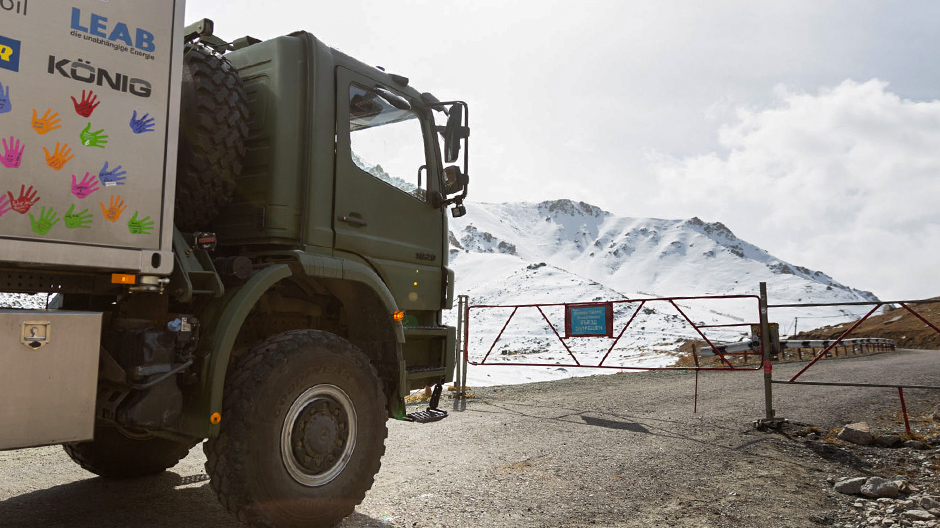
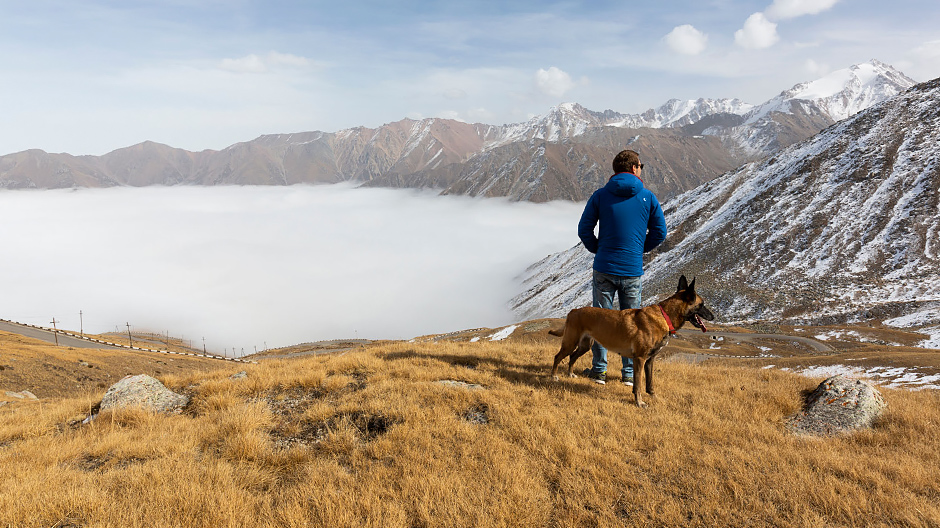
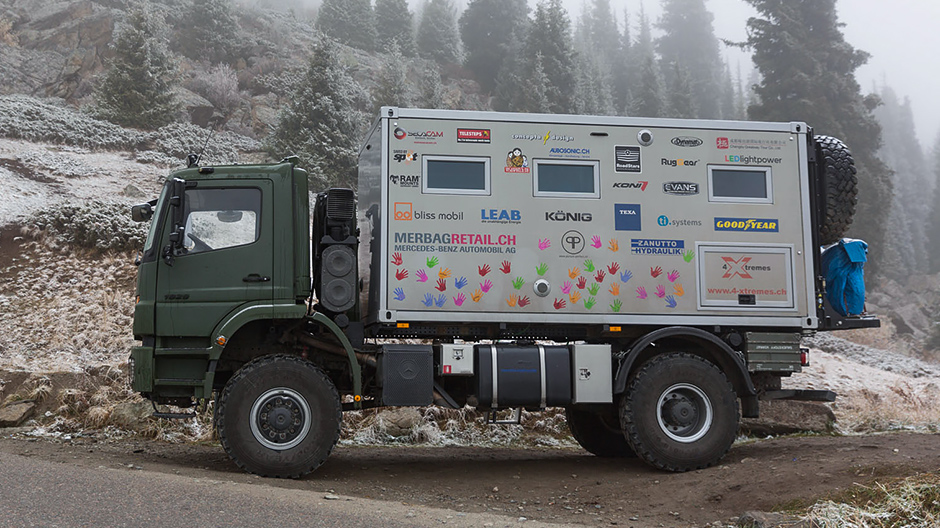
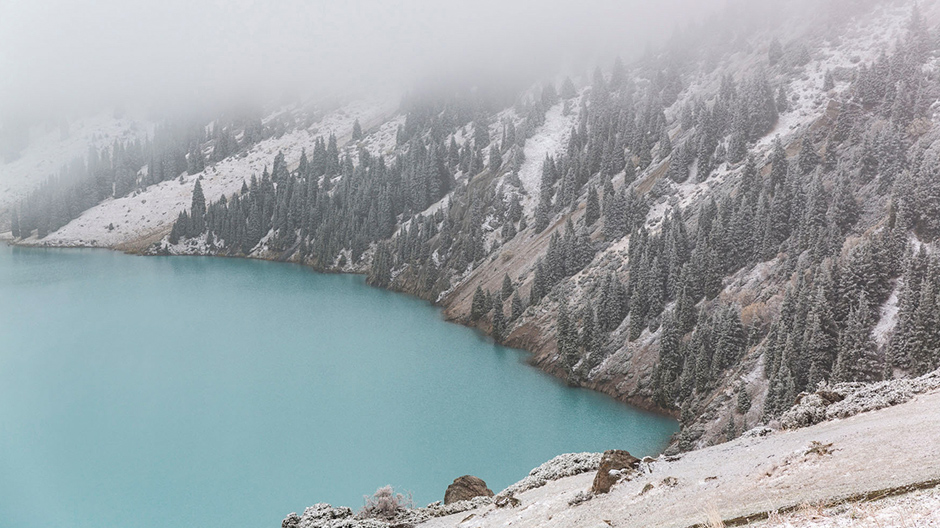
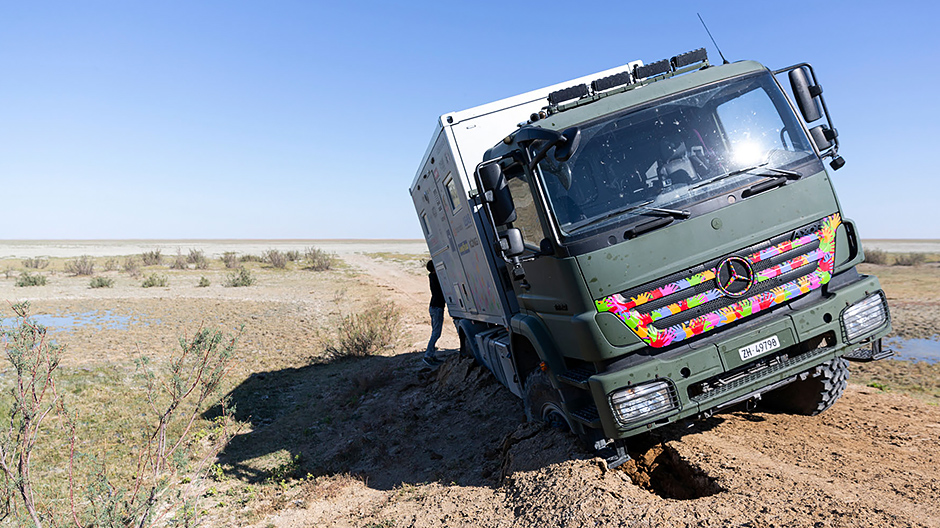
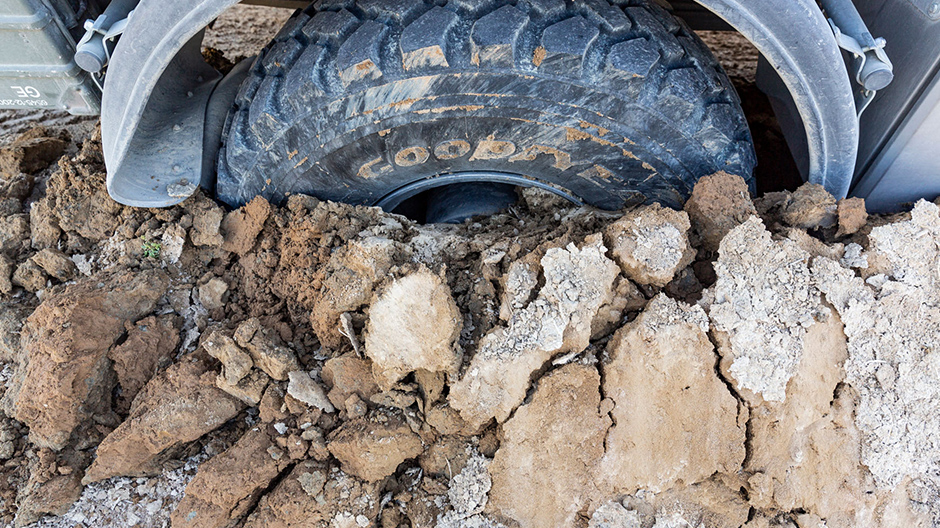
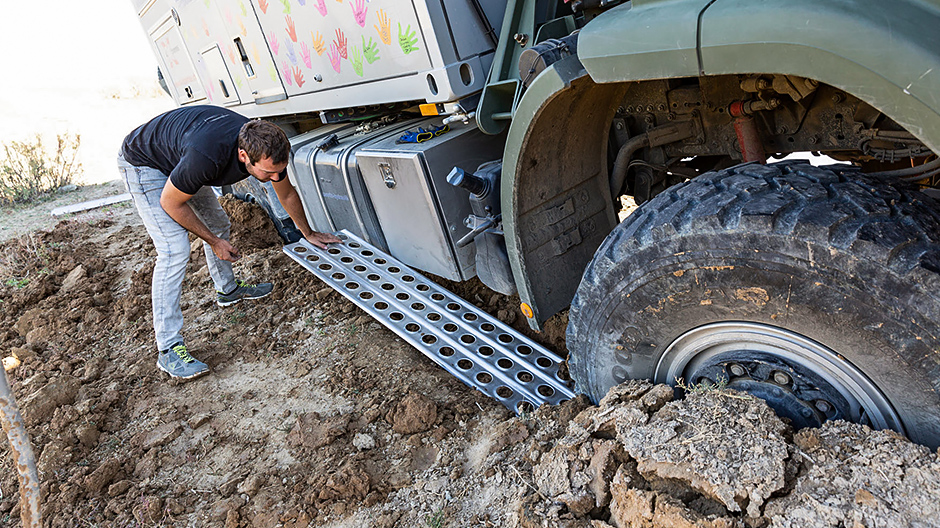
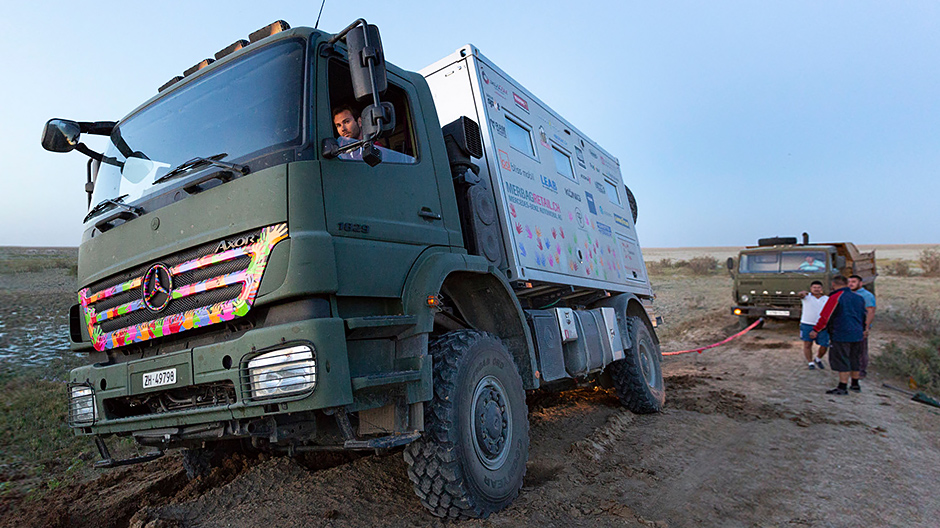
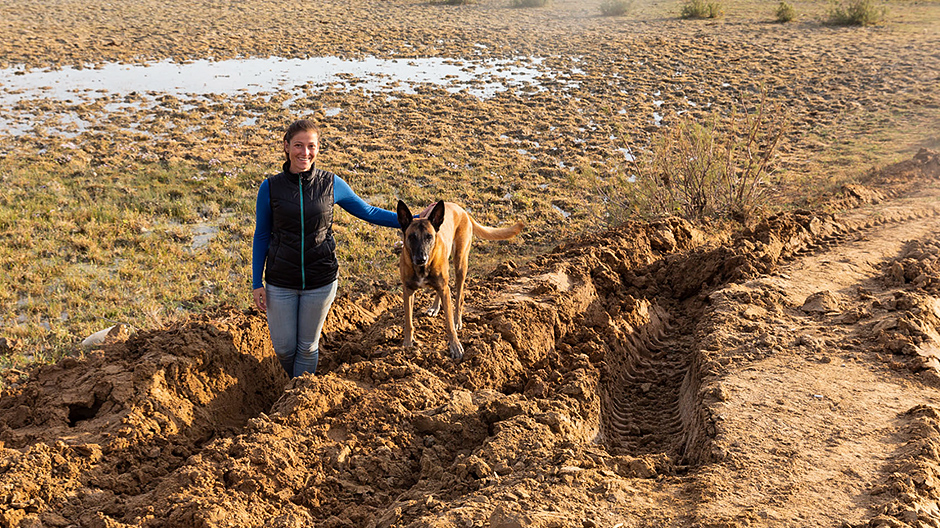
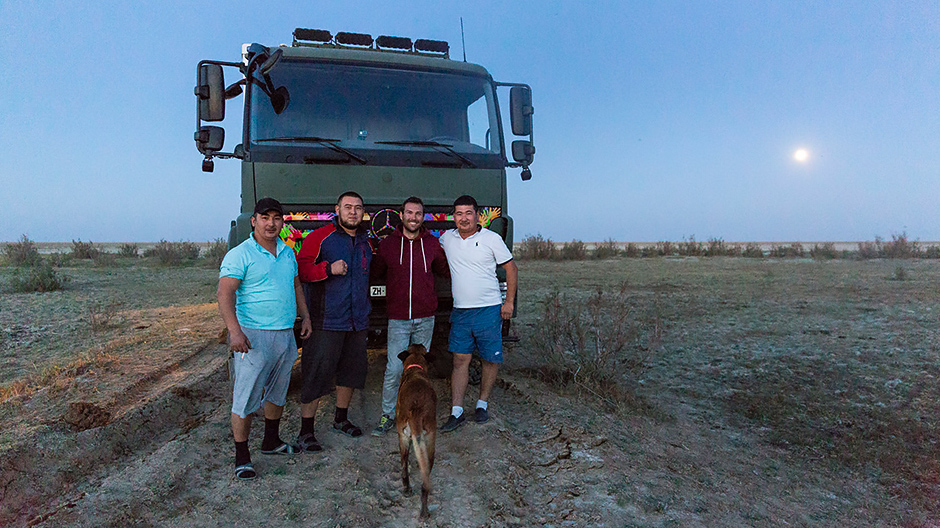
A few weeks ago it was boiling hot and yesterday we had the first snowfall. Today we had to experience just how fine the line between success and disappointment can be. We are now south of Kazakhstan's largest city Almaty and have pushed through thick fog into the Tian Shan mountains. Here lies the Zhusalykezen pass at an altitude of 3300 metres.
Because this is higher than any European pass that can be crossed in a vehicle, we had chosen it as a substitute for the "Xtreme" in India which we had had to forego because our visa had been refused. Initially we were not sure whether we would reach the pass before the onset of winter. However – first snow or not – we did it! The big "but"? There is a space research station up there and you can't drive up to the very top. At least not today.
Six hours a day on the road.
Since our last report, we have driven from Georgia through Russia's North Caucasus and half of Kazakhstan – about 4500 kilometres. Not a lot in comparison to the quota of many truckers. But often enough the going was so slow that we were on the road six hours a day. In Georgia we had to replace a seal. The mechanics were able to get hold of a Mercedes GenuinePart very quickly – remarkable!
The thought of the Russian border made us weak at the knee. You can read a lot about the public servants there. And yet we experienced the complete opposite: everything went smoothly, the officers wanted to stick a hand sticker on our box and gave us bread and tomatoes. North Caucasus is not an unproblematic region. That is why the police and military are very conspicuous on the Russian side. We had to pass through checkpoints and once we even had to go through a body scanner like those at airports.
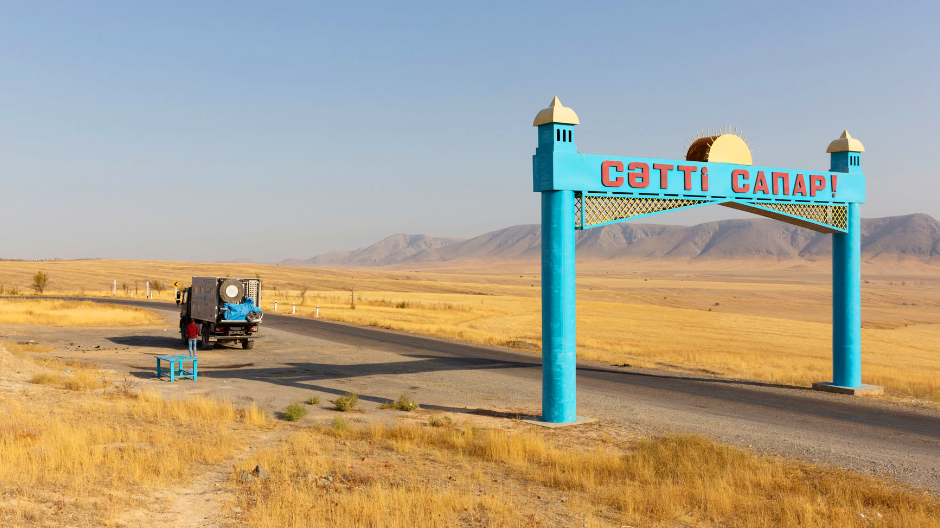
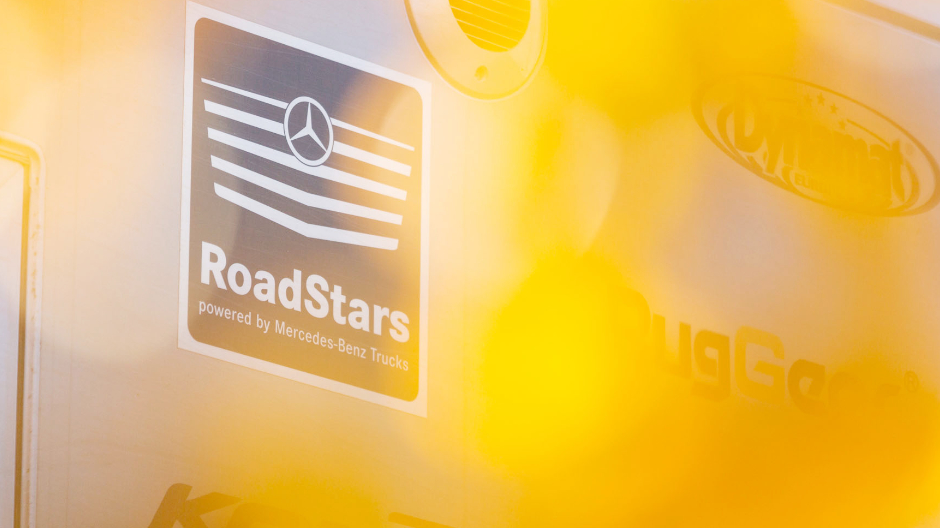
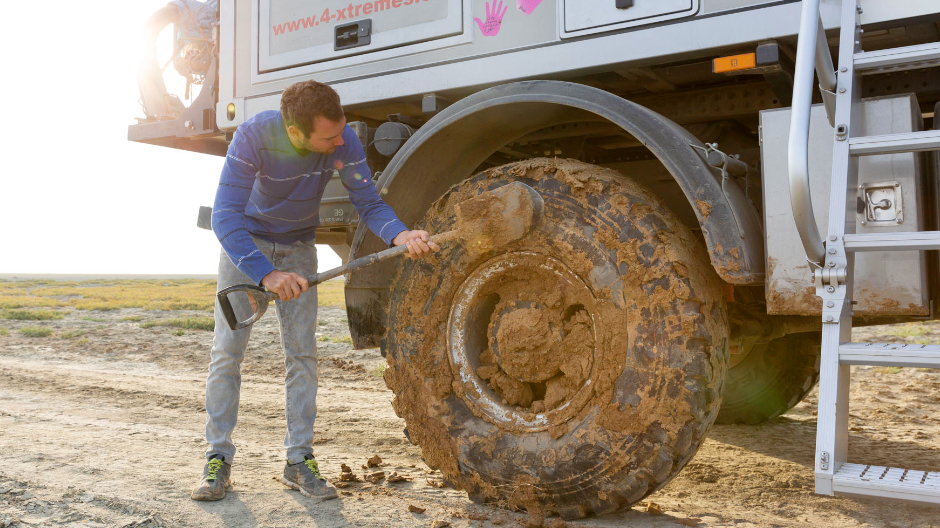
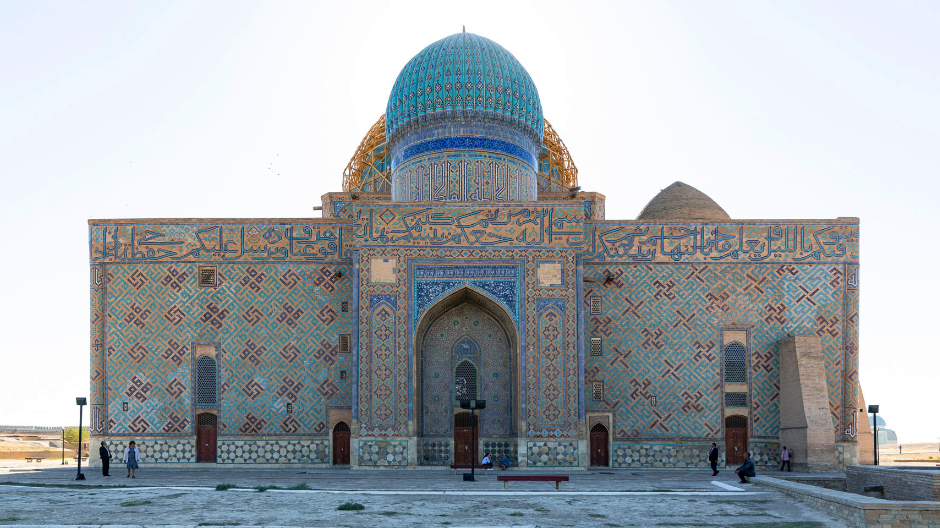
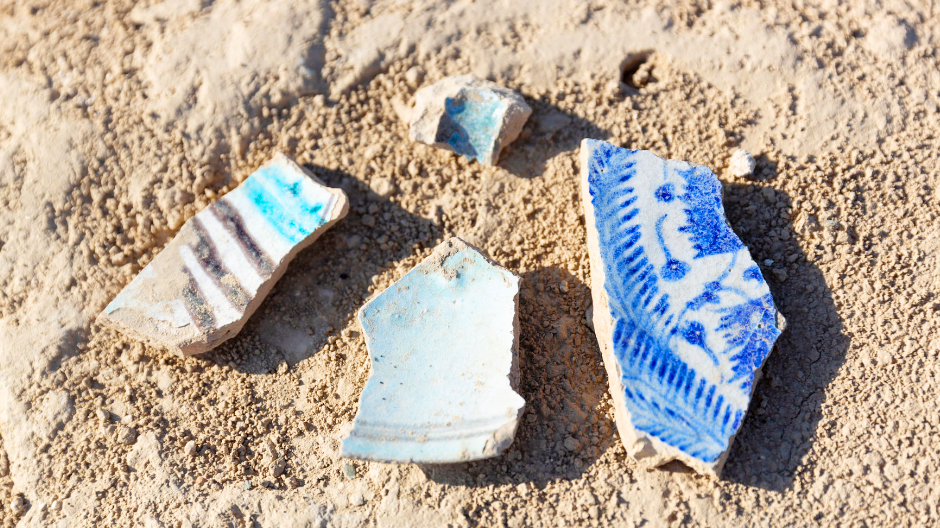
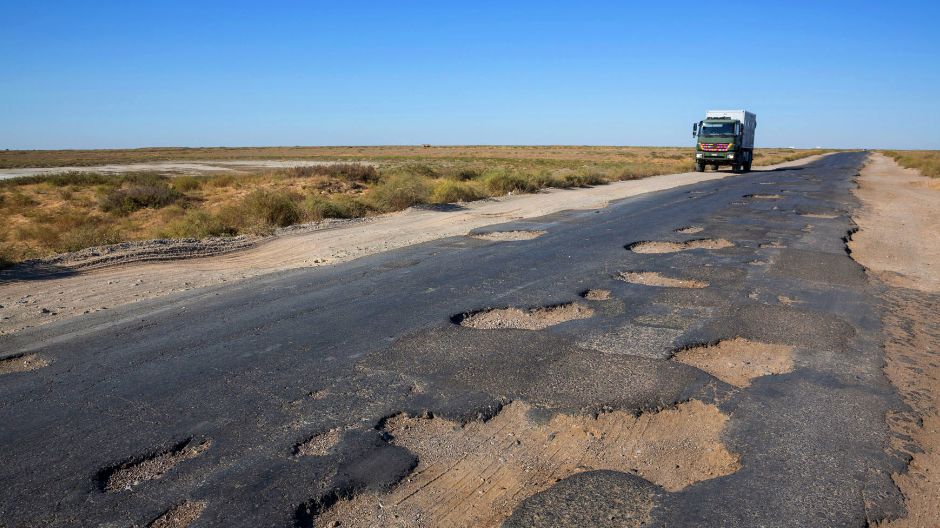
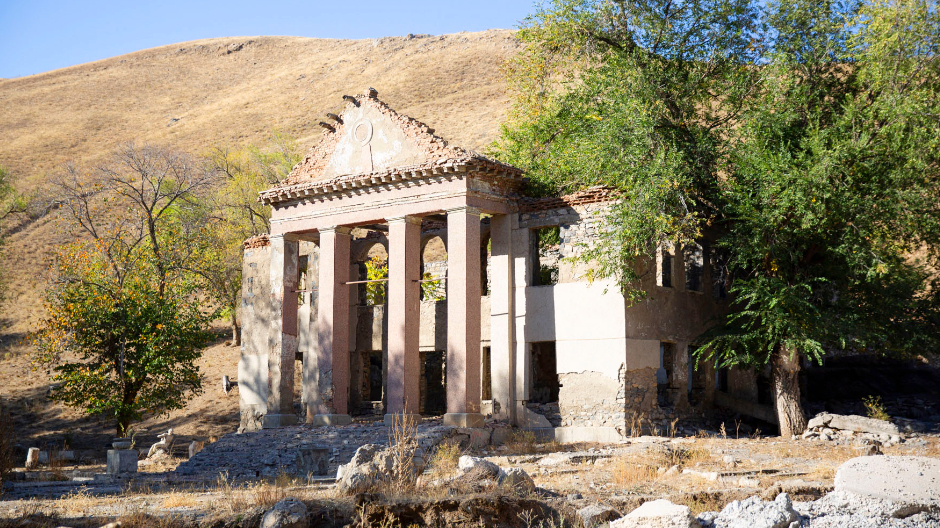
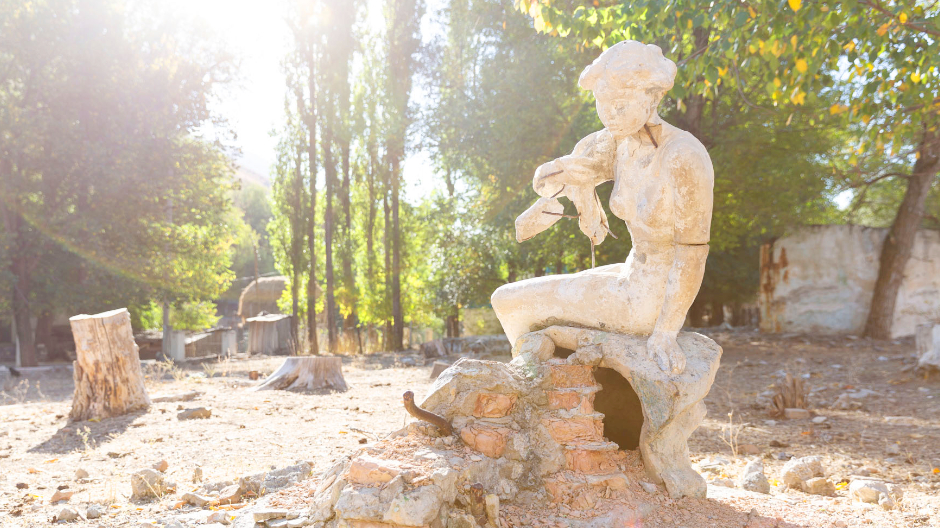
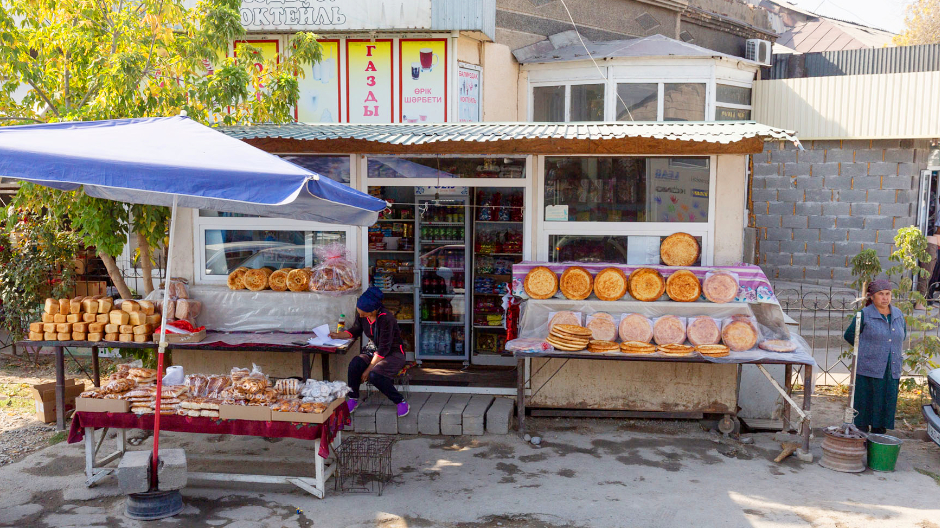
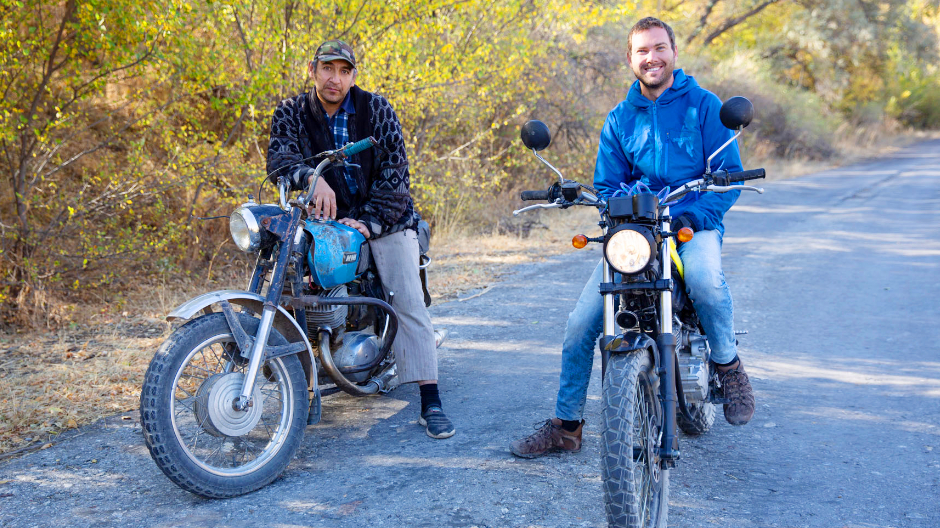
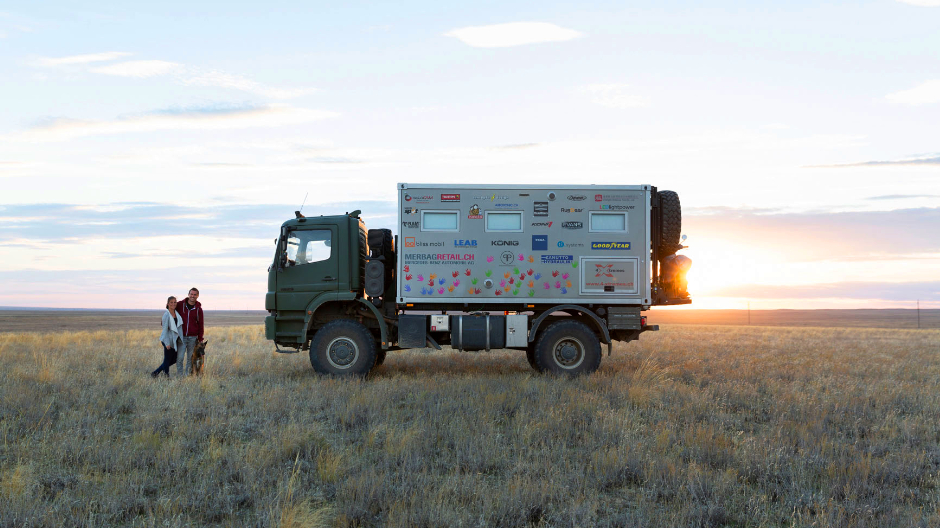
Gunfire and searchlights at midnight.
We got an uneasy feeling many kilometres later, a long way down our route: close to Almaty where we wanted to stay overnight by a river. Green grass under our feet, trees – a small paradise! Until we heard gun shots at midnight and saw a pickup with searchlights on the opposite bank. It was probably only farmers out fox hunting. But we didn't want to risk anything, stepped on the gas and stayed overnight at a filling station where long-distance truck drivers sleep.
Back to Russia: We had really only seen the route through Russia's North Caucasus as a "passage" through to Kazakhstan. So we were all the more surprised by the diversity of the region. The Sarykum sand dunes, Europe's highest dunes can be found in the Republic of Dagestan, for example. When you're right at the top, all you can see are green fields and mountains which leave you thinking: "Something's not quite right here!" The coast of the Caspian Sea is breathtaking here: the sand is almost white, the horizon endless – and when the sun goes down, you can watch the night arrive. The sun is one side while on the other, there is the dark horizon with all kinds of colours in between.
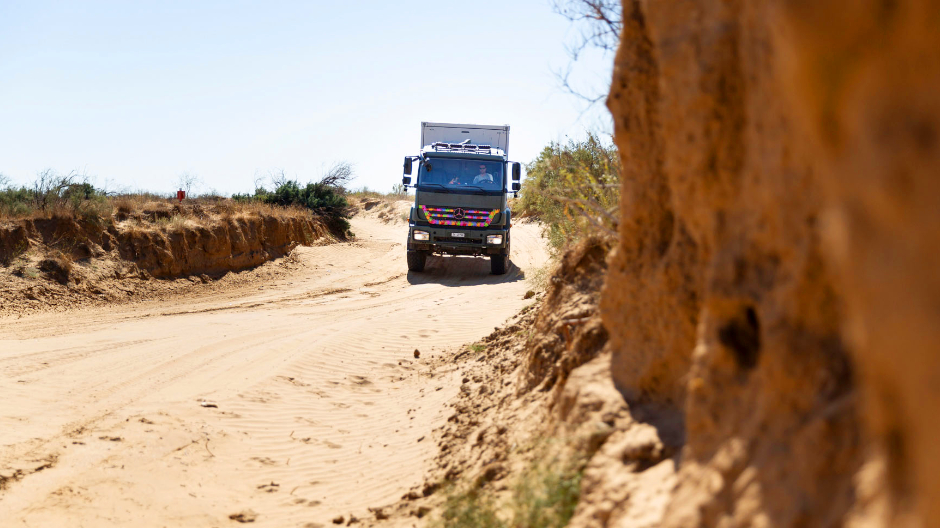
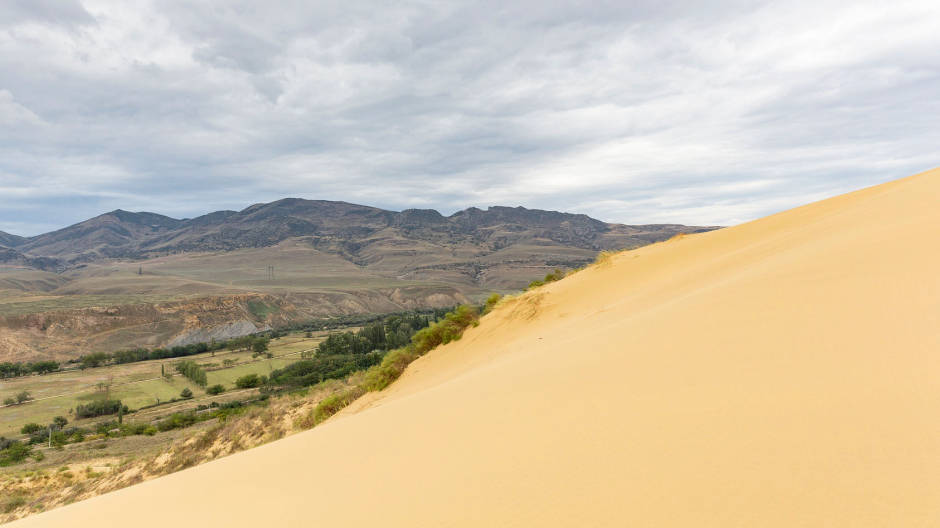
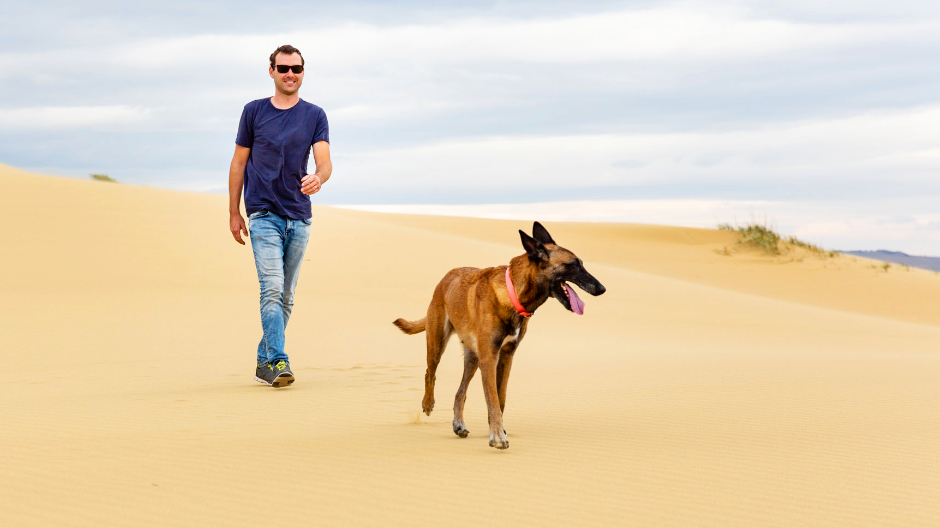
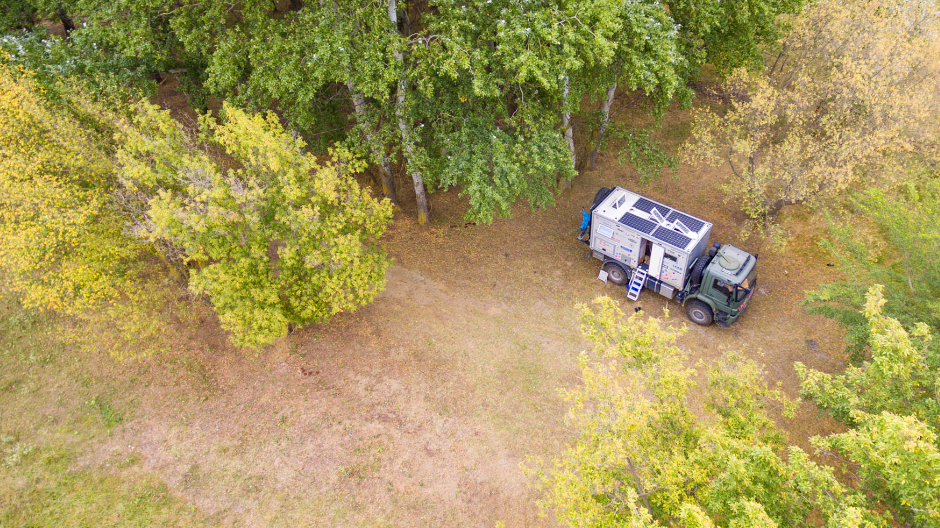
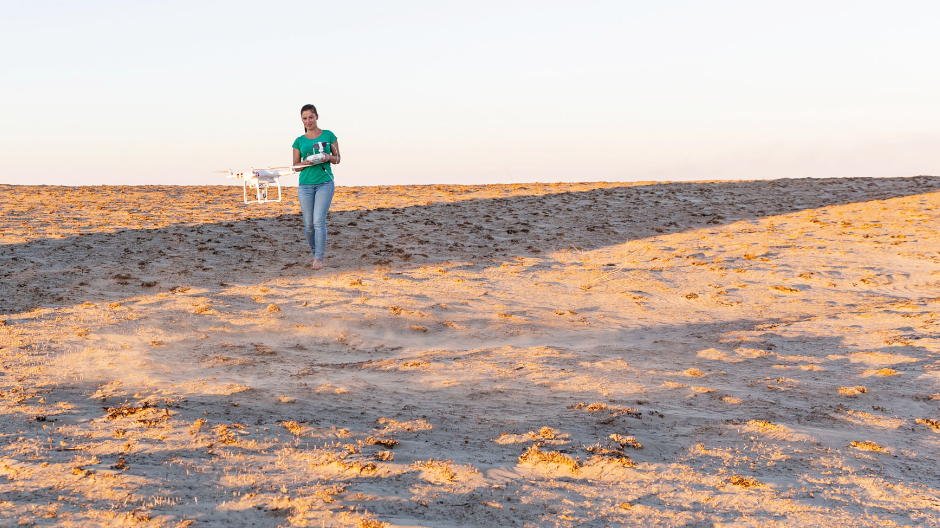
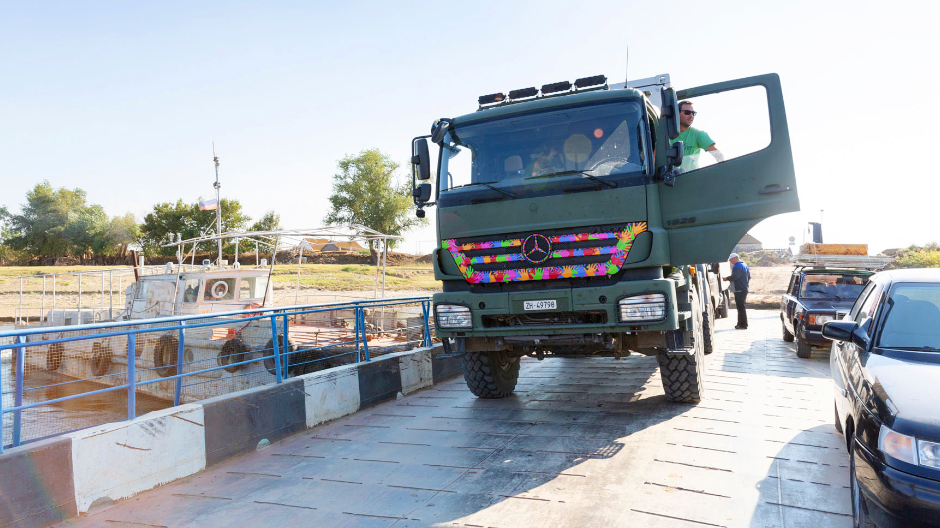
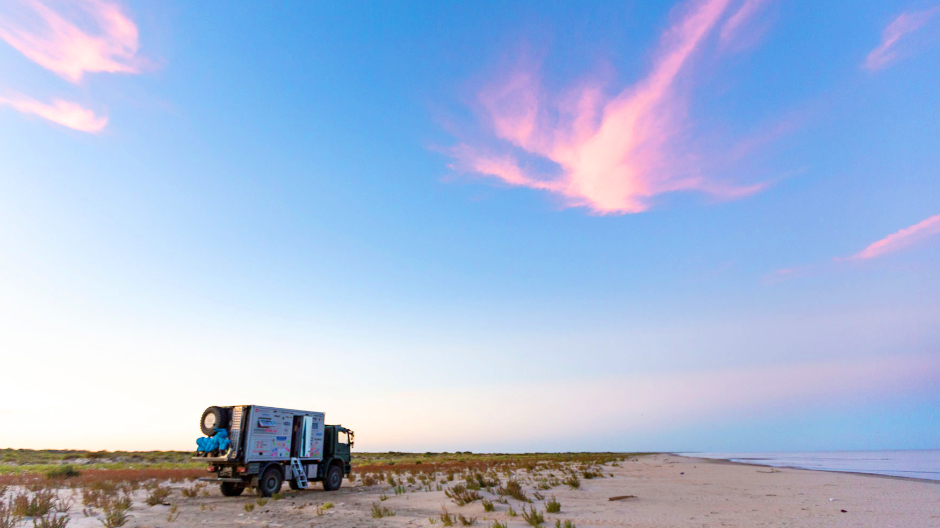
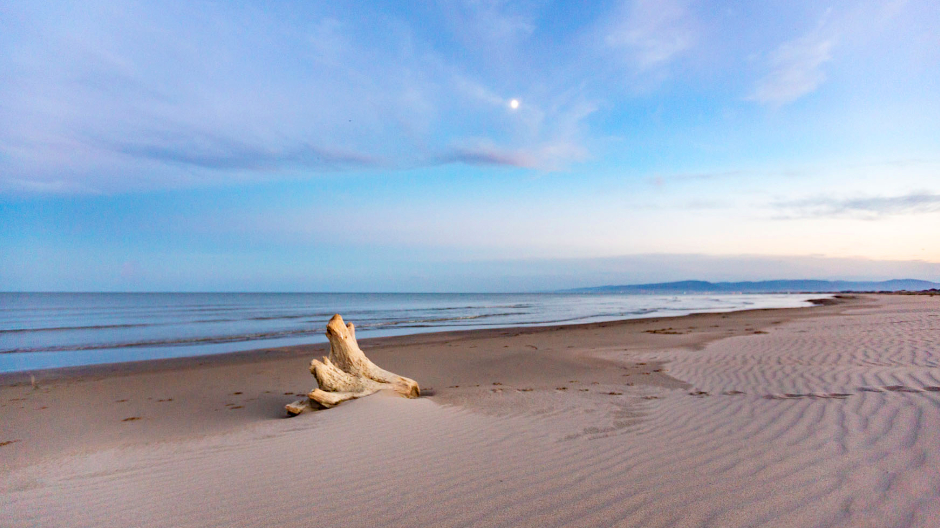
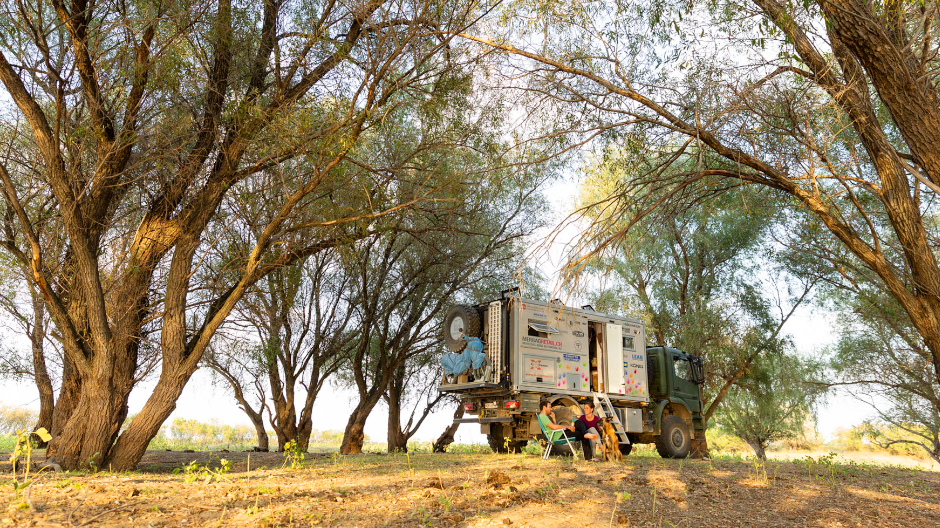
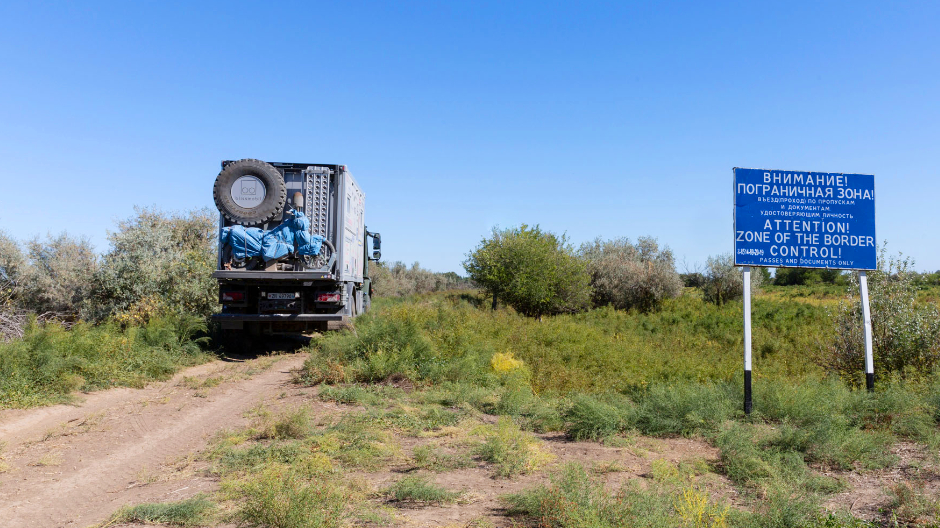
Driving by compass again – exciting!
On the last stage before the border to Kazakhstan, the navigation system showed a "large" road, but this is still in the planning phase. At some point the asphalt ended and a sand track began. As this was not on the navigation route and branched off repeatedly, we had to orientate ourselves using the compass for two days. Very exciting! In fact, it reminded of us of our trip to America where we only had maps and a compass. We still always got where we needed to be, even if we sometimes ended up taking the long way round.
Kazakhstan is the ninth-largest country in the world. We crossed from west to east travelling around 4500 kilometres. As tourists we were allowed to stay for 30 days. So it was clear in our minds that we'd have to push ahead from the very beginning. With that in mind, it was pretty annoying that the first 50 kilometres of tarmac were peppered with knee-deep potholes.
Hours of struggling in the mud.
It was worse on the second day: in the steppe we wanted to replenish our water reserves at a lake whose banks were surrounded by a mound of earth. As our hose wasn't long enough to reach over the mound, we carefully drove up it to get closer to the water. The ramp felt stable, but looks can be deceiving: the Axor slid to the right.
Five hours of shovelling, positioning the traction plates, more shovelling, heaving the plates out of the mud and starting from scratch again. After a while the shovel broke – and there was no end to the mud. Each attempt to pull away in the truck caused it to lean even more to the side. Until our saviour turned up: a local who just happened to pass by. He organised a truck that pulled us out. By the time that was done, the moon was high in the sky.
Making plans at a snail's pace.
The next 1300 kilometres cost us ten days. The roads were so bad that traffic travelled to the right and left of them. But our progress was at a snail's pace on these tracks too. However, this hard slog through the steppe did have one advantage: it gave us time to discuss and make plans for further projects.
Kazakhstan is world-famous for Baikonur. We of course made sure that the space mission launch centre in the south of the country was along our route, especially as we'd read of the prototypes that could be seen there. Unfortunately we were to be disappointed: anyone who wants to visit the guarded complex must apply a week in advance.
Ruins and ghost towns.
It is only 1400 kilometres from Baikonur to Almaty. Somewhere in the expanse between are the ruins of Sauran. The massive walls give an impression of the size of the town on the ancient silk road. A team has begun to restore it and will definitely be busy for a good few years. We climbed over walls, discovered coloured shards and would have just loved to start digging ourselves.
And finally another highlight before Almaty: a canyon that became increasingly narrow so that we had to leave the truck and drive on with the motorcycle – to a ghost town with autumn trees between houses fallen into disrepair which in contrast to the situation at night was not at all spooky. We camped in the canyon for two days, washed all of our things in the fresh mountain water and got rid of all the dust from the steppe. We will treat ourselves to a few days in the region – and then see to overcoming the remaining 1200 kilometres before the visa runs out. Let's see how good the roads are.
Part 7 of the RoadStars series will be published at the end of November. Stay tuned!
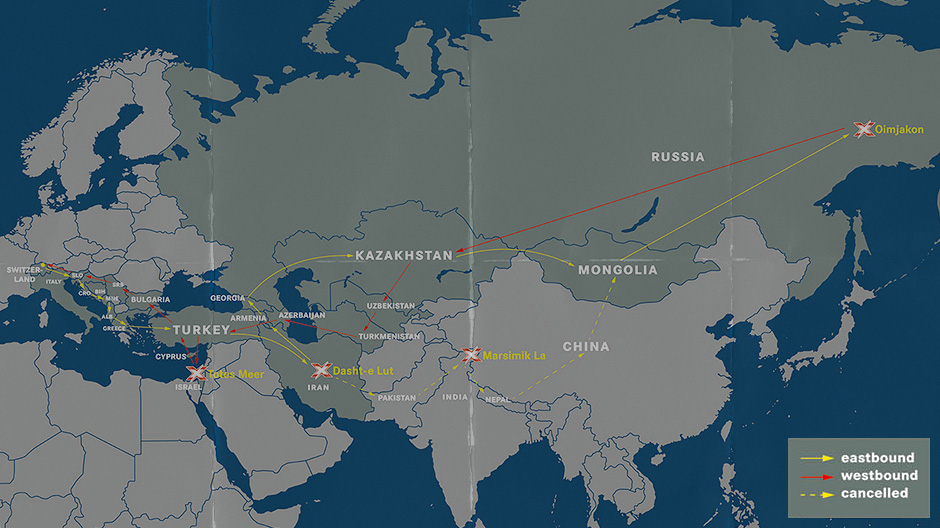
4-Xtremes – the tour of superlatives.
4-Xtremes: a couple from Switzerland is taking their truck on a superlative tour
Andrea and Mike Kammermann are heading out in their expedition truck on the ultimate tour – part 1
Andrea and Mike Kammermann present their Axor-based expedition vehicle – part 2
Karaoke by the lake and storms over the sea for the adventurer couple from Switzerland – part 3
That was hot! The two adventurers from Switzerland on tour in Iran – part 4
Suspected of espionage and landed on the moon! News from our Swiss adventurers – part 5
Consistently off-road – our Swiss adventurers “conquer” central Asia – part 7
The frost takes its toll – bitter setbacks and helping hands for our Swiss adventurers – part 8
The Kammermanns travel on to the pole of cold, defying all obstacles – part 9
Polished ice and a piece of home in the middle of Siberia for our Swiss adventurers – part 10
A disappointing setback and adventure sightseeing in Bulgaria for the Kammermanns – part 12
Andrea and Mike finish their tour of extremes. And are already back on the road – part 13
Photos: 4-Xtremes




Comment
Please log in to post a comment.
34 comments
Ich hätte nicht mehr den Mut zu sowas .
Aber toll das es mutige junge Leute gibt .
Ich hätte nicht mehr den Mut zu sowas .
Aber toll das es mutige junge Leute gibt .
alles Gute weiterhin !!
alles Gute weiterhin !!
Gruß
Klaus
Gruß
Klaus
Gruss
Andreas
Gruss
Andreas
Und Ihr bekommt alles "gebacken" - manchmal vielleicht mit etwas mehr "Schweiß". Die Schaufel ist hoffentlich ersetzt? - Ich staune.
Wenn's nun kalt wird, die Straßen unter Schnee begraben sind... gute Fahrt!
Gruß
Klaus
Und Ihr bekommt alles "gebacken" - manchmal vielleicht mit etwas mehr "Schweiß". Die Schaufel ist hoffentlich ersetzt? - Ich staune.
Wenn's nun kalt wird, die Straßen unter Schnee begraben sind... gute Fahrt!
Gruß
Klaus
Lg aus der Mongolei
Lg aus der Mongolei